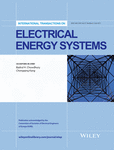Study on PD pattern recognition of XLPE cable under oscillating voltage based on optimal discriminant vector
Summary
Four kinds of artificial defect models of 10-kV cross-linked polyethylene cable are designed according to the common types of cable defects to study the pattern recognition of partial discharge characteristics of cable defect under oscillating voltage. Oscillating voltage is applied to perform the partial discharge test, and the time-frequency-energy distribution image is constructed on the basis of Hilbert-Huang transform. Two-directional, two-dimensional principal component analysis is used to reduce the dimension of the time-frequency-energy distribution images of the 4 kinds of detects. Linear discriminant analysis is applied to achieve the optimal discriminant vector, which is the input vector of recognition classification, whereas the least squares support vector machine is applied to recognize the 4 kinds of defects. Result shows that the use of optimal discriminant vector of time-frequency-energy distribution image as input of pattern recognition has a better effect compared with the traditional method that uses feature parameters of 3-dimensional statistical images as input vector.




